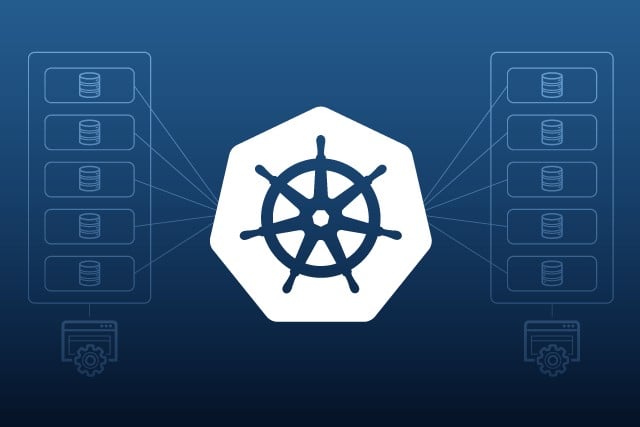
Mastering the Kubernetes Design Landscape
- Published on
- Authors

- Author
- Ram Simran G
- twitter @rgarimella0124
Kubernetes has revolutionized the way modern applications are built, deployed, and scaled. At the heart of Kubernetes’ success lies a rich ecosystem of design patterns that enable developers and DevOps engineers to tackle the inherent complexities of distributed systems. These patterns serve as architectural blueprints, guiding the design and implementation of Kubernetes-based applications to ensure they are scalable, resilient, and maintainable.
Structural Patterns
1. Init Container
The Init Container pattern is responsible for performing one-time setup tasks before the main containers are started. This pattern ensures a consistent and reliable application environment. It’s particularly useful for tasks like database schema migrations, configuration file generation, or resource provisioning that need to be executed before the main application can start.
2. Pod
As the fundamental unit of deployment in Kubernetes, the Pod pattern groups one or more containers that share resources and a lifecycle. Pods provide a logical boundary for co-located containers, simplifying management, networking, and resource allocation. This pattern is essential for building modular, scalable, and resilient applications.
3. Sidecar
The Sidecar pattern extends the functionality of the main container by adding supporting services, such as logging, monitoring, or protocol translation. By encapsulating these cross-cutting concerns in a separate container, the Sidecar pattern promotes separation of concerns, maintainability, and the ability to scale these services independently.
4. Main Container
The Main Container pattern represents the primary container that encapsulates the core business logic of the application. By clearly separating the main application from supporting services, this pattern enables a modular and composable application architecture, making it easier to develop, test, and deploy individual components.
Behavioral Patterns
5. Batch Job
The Batch Job pattern ensures the successful completion of a task by handling failures and retries. This pattern is ideal for batch processing, data transformation, and other one-off workloads that need to be executed reliably. With the Batch Job pattern, applications can handle transient errors, retry failed tasks, and ensure data integrity throughout the pipeline.
6. Stateful Service
The Stateful Service pattern manages the state of an application, providing persistent storage, reliable network identities, and ordered, graceful scaling for stateful components like databases or message queues. This pattern is critical for building robust, highly available, and scalable applications that depend on persistent data storage or complex state management.
7. Stateful Discovery
The Stateful Discovery pattern facilitates service discovery and communication between stateful components, ensuring reliable and consistent connectivity within a Kubernetes cluster. By addressing challenges like dynamic IP addresses, load balancing, and fault tolerance, this pattern enables developers to build resilient, self-healing applications capable of adapting to infrastructure changes.
Foundational Patterns
8. Health Probe
The Health Probe pattern monitors the health of containers, allowing Kubernetes to detect and respond to failures or unhealthy states. This pattern is crucial for maintaining the overall health and availability of the application, as Kubernetes can automatically restart or reschedule unhealthy containers to ensure continuous operation.
9. Automated Placement
The Automated Placement pattern optimizes the placement of containers on nodes, taking into account resource constraints, affinity rules, and other factors to ensure efficient resource utilization and scalability. By automating container placement, this pattern reduces the burden on developers and operators, allowing them to focus on high-level concerns rather than low-level resource management.
Higher-Level Patterns
10. Operator
The Operator pattern extends the Kubernetes API, enabling developers to define and manage custom resources, automate complex application lifecycles, and integrate with external systems. By encapsulating domain-specific knowledge and automating routine tasks, Operators simplify the management of complex, stateful applications, offering greater flexibility and extensibility.
11. Controller
The Controller pattern monitors the state of the Kubernetes cluster, reconciling the desired state with the actual state and managing the lifecycle of custom resources and applications. Controllers are fundamental in implementing higher-level patterns like Operators, as they provide the logic for observing, analyzing, and managing Kubernetes resources.
Real-World Example: Scaling a Microservices-Based E-Commerce Platform
To illustrate the practical application of these design patterns, let’s explore an example of a scalable e-commerce platform built with a microservices architecture:
- Sidecar Pattern: The development team adds a logging sidecar to each microservice for centralized log collection and analysis, enhancing observability.
- Stateful Service Pattern: They use a distributed database (e.g., MongoDB) to manage state in shopping cart and order management services, ensuring data persistence.
- Stateful Discovery Pattern: A service mesh (e.g., Istio) is used to handle service discovery, load balancing, and secure communication between microservices.
- Operator Pattern: A custom Operator manages the deployment, scaling, and lifecycle of the platform, including database failovers and rolling updates.
By applying these patterns, the team created a highly available, scalable, and maintainable e-commerce platform capable of handling traffic spikes and ensuring a seamless customer experience.
Conclusion
Kubernetes design patterns are the building blocks of modern, scalable, and resilient applications. By understanding and leveraging these patterns, developers and DevOps professionals can unlock the full power of Kubernetes, enabling them to architect and deploy complex, distributed systems with confidence.
In this blog post, we’ve explored the top 10 Kubernetes design patterns, their purpose, benefits, and real-world applications. I encourage you to dive deeper into these patterns, experiment with them in your own projects, and share your experiences with the community. By mastering the Kubernetes design landscape, you’ll be well-prepared to build cutting-edge, cloud-native solutions.
Cheers,
Sim